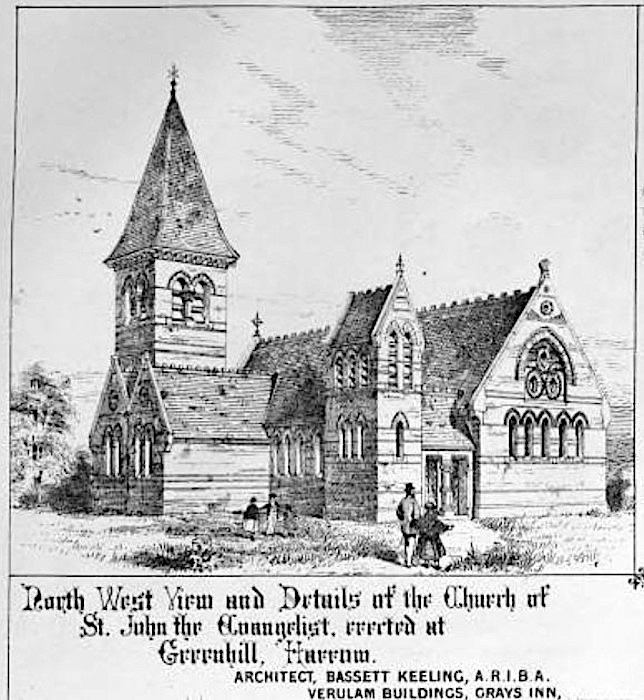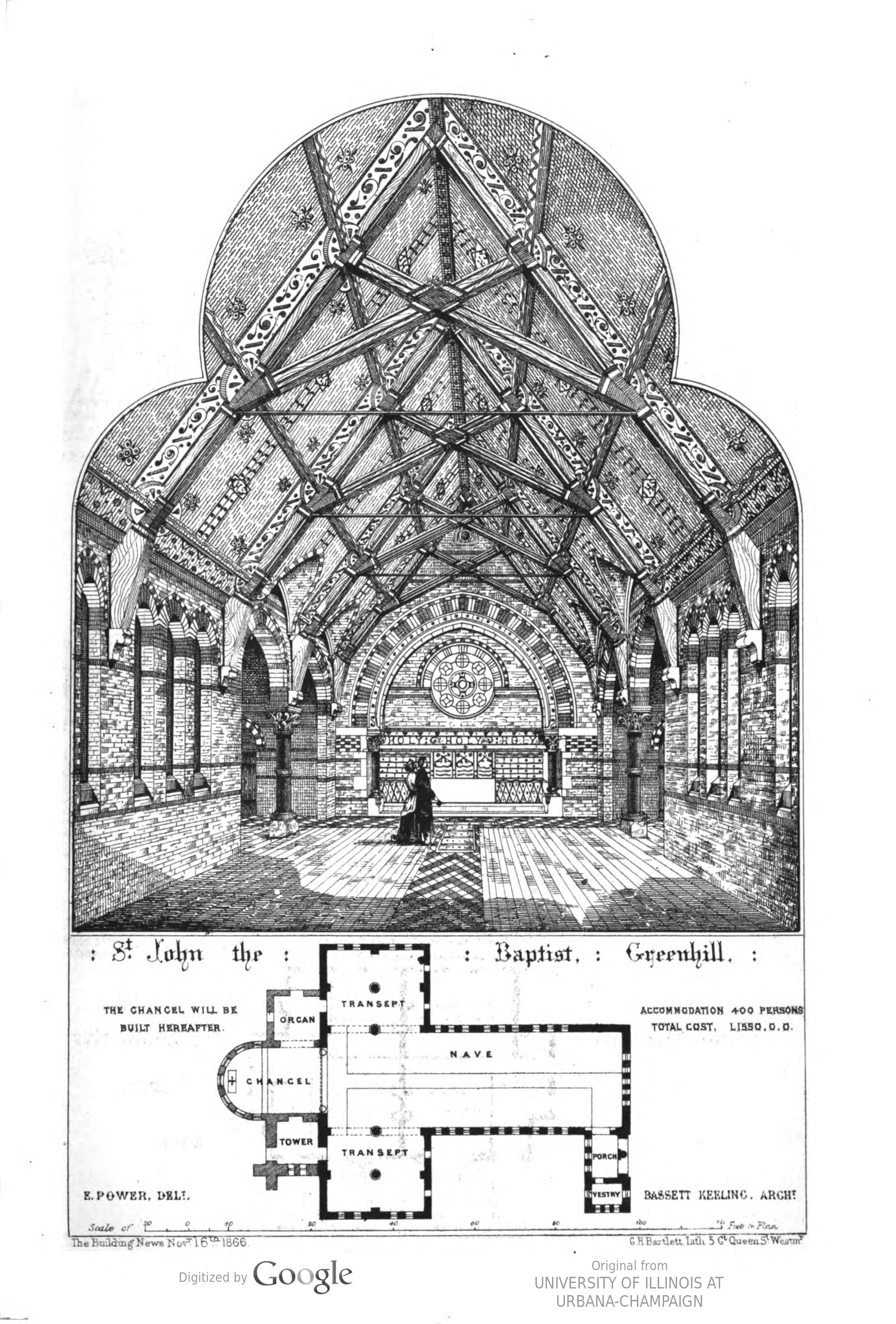
St John the Baptist, Harrow on the Hill, by Enoch Bassett Keeling (1837-1886), as shown in Building News and Engineering Journal of 21 June 1867, p. 426. (NB. The church was never called St John the Evangelist).


Left: Closer view of the church, as planned. Right: View of the interior.
The church was small, intended as a chapel of ease to St. Mary's, and also, explains Edmund Harris, to serve the new suburb growing up around the railway there (105). But it was still a striking example of Keeling's work, with an impressive interior. James Stevens Curl has described it in The Critic as "an accomplished design featuring well thought-out, assured structural polychromy, with a magnificent scissor-trussed roof, itself powerfully decorated." However, at the time, "a certain quaintness of effect" was noted (see the commentary below), just the kind of unconventional quality that told against Keeling in the eyes of the establishment.
Commentary from the Building News of 21 June 1867
AN interior view and plan of this church was given in the Building News for November 16, 1866, No. 619. We now give a sheet of details, including a small sketch of the exterior, from the north-west, as the church will appear when complete. The description accompanying the previous illustration gives full particulars of arrangement, materials, and cost. The details will otherwise sufficiently explain themselves, They are of very simple character, as might be presumed from the outlay, viz., £1,600 for 450 sittings for adults on one floor, and including decorations, gasfittings, and heating, there being stepped lead lashings to all gables, oak doors, wrought metal work to special design, and throughout the best workmanship and materials. The brick arches are entirely of 3in, 4 1/2 in., or 9in. rings, ungauged, and only very slightly axed for the smaller arches, Being thus composed of single bricks in each ring, and the bricks used whole and undressed, a certain quaintness of effect, simplicity of construction, and the utmost economy of cost are secured. The heating is by Porriti’s ground stoves. Messrs. Dove Brothers were the contractors, and the architect was Mr. Bassett Keeling. [426]
Later History
Unfortunately, the church was affected by subsidence, and anyway proved inadequate as the population of the suburb increased. It was almost entirely rebuilt in the early twentieth century: "Parts of the old building were demolished and a new nave and aisles were consecrated in 1905, transepts in 1925 and a new chancel in 1938" (National Archives). Harris numbers it among those of Keeling's works that were lost to "a combination of bad luck and 20th-century indifference to High Victorianism" (89).
Bibliography
Curl, James Stevens. "Going Rogue: An interesting if unappealingly illustrated reassessment of a neglected style." The Critic. https://thecritic.co.uk/going-rogue/
Harris, Edmund. The Rogue Goths: R.L. Roumieu, Joseph Peacock and Bassett Keeling. Swindon: Liverpool University Press for Historic England, 2024.
"Porch West View and Details of the Church of St John the Evangelist, erected at Greenhill, Harrow" (interior). The Building News Vol. 14 (21 June 1867): 426. HathiTrust, from a copy in the libraries of the University of Illinois at Urbana-Champaign. Web. 31 March 2025.
"St John the Baptist, Greenhill" (interior). The Building News Vol. 13 (16 November 1866): 763. HathiTrust, from a copy in the libraries of the University of Illinois at Urbana-Champaign. Web. 31 March 2025.
St. John the Baptist, Greenhill: Sheepcote Road, Harrow. The National Archives (from the London Archives, 74). Web. 31 March 2025.
Created 31 March 2015